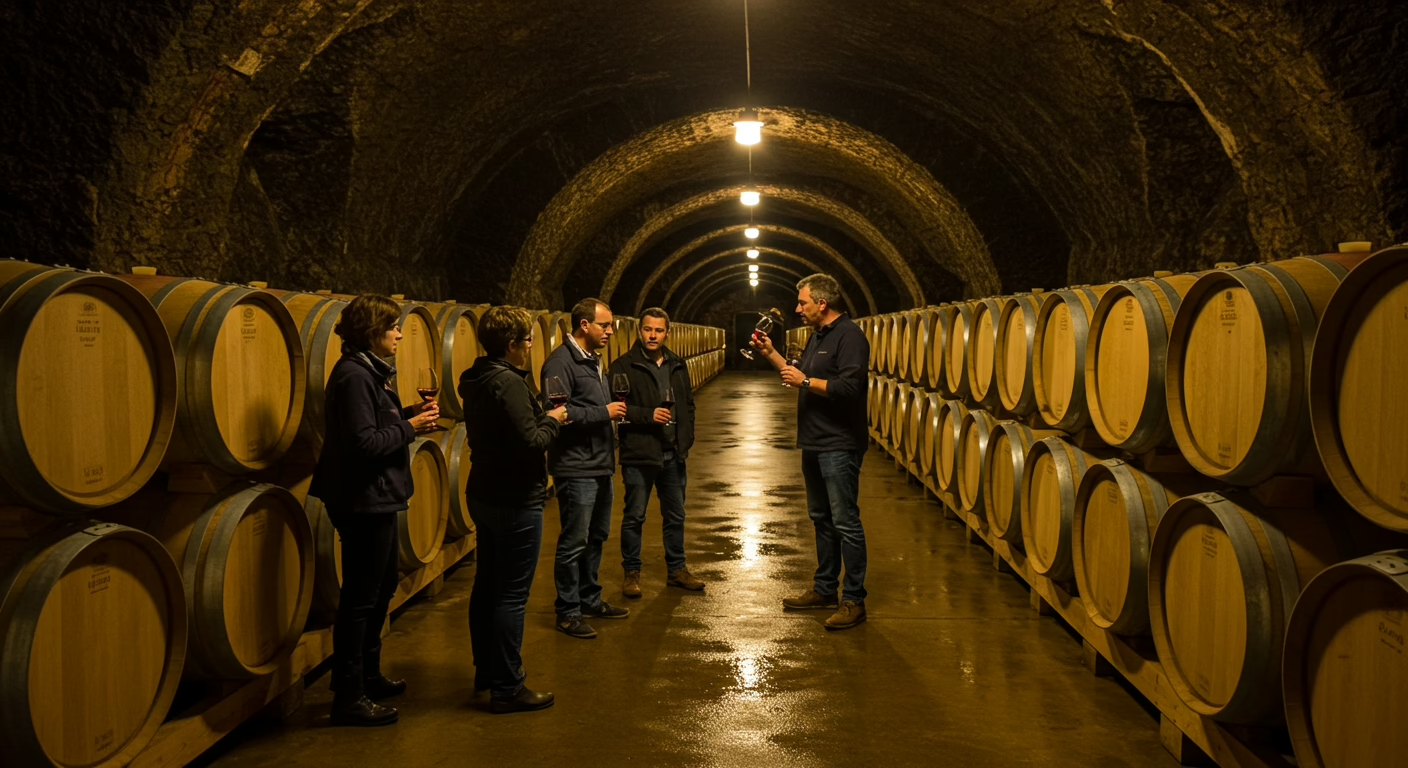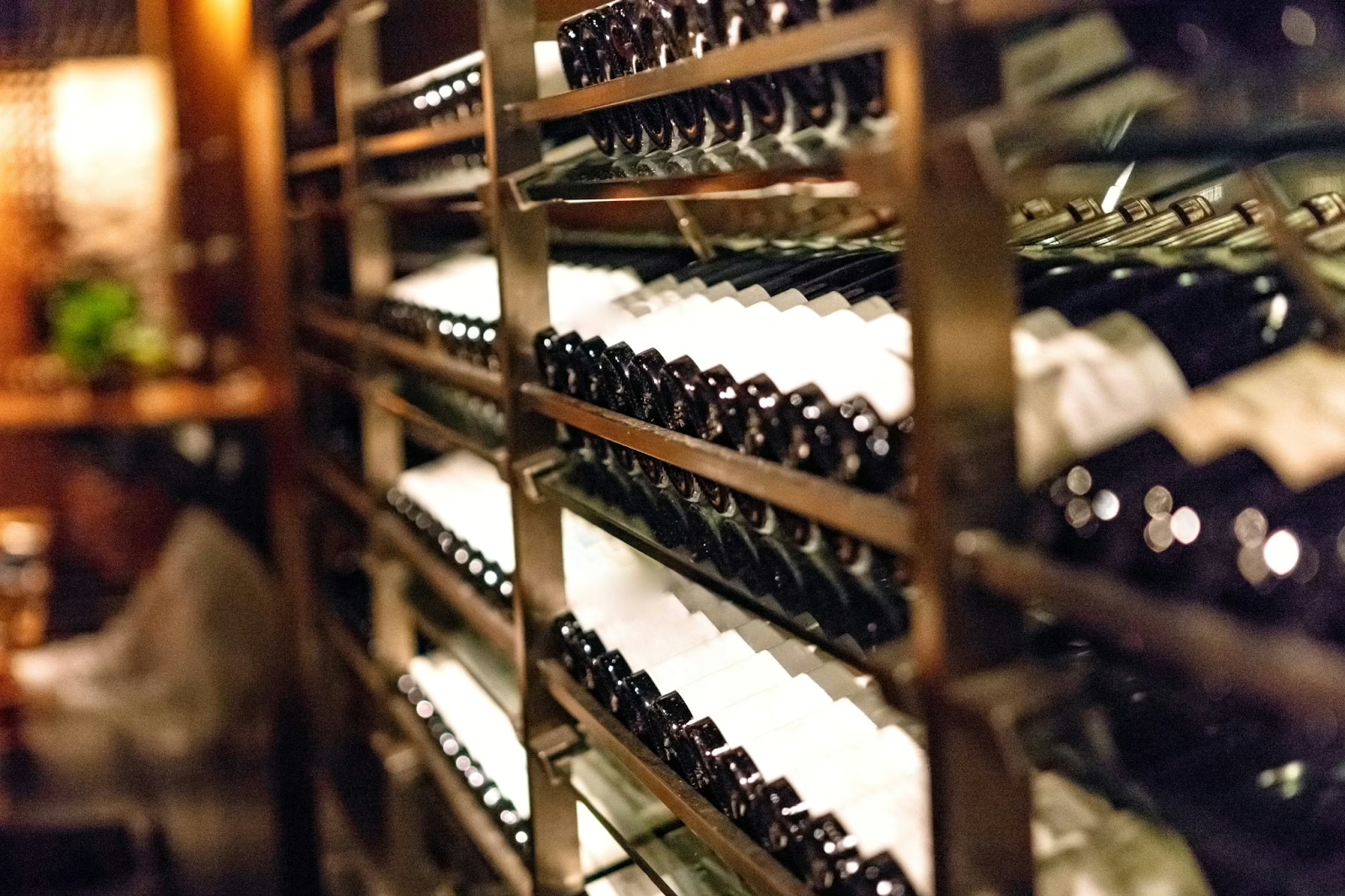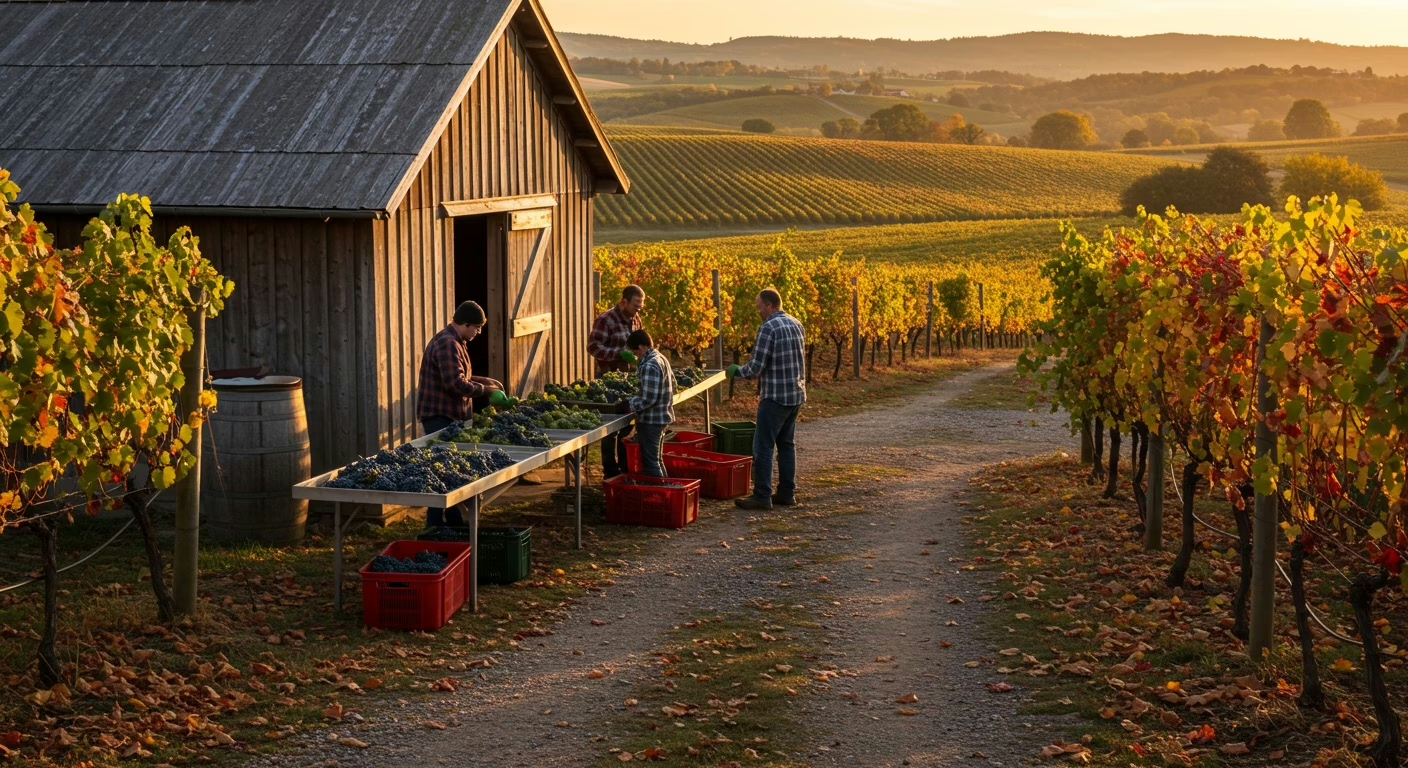
Seasonal Guide to Sonoma Wine Tours: When to Go and What to Expect
Planning a wine tour in Sonoma County requires understanding how the seasons transform this premier wine region. Timing your visit can dramatically shape your experience, from the vibrant greenery of spring to the golden hues of harvest season.
Whether you’re a seasoned oenophile or a casual wine enthusiast, knowing what each season offers helps create the perfect wine country experience. Sonoma’s diverse microclimates and terroirs produce exceptional wines year-round, but each season presents its own unique atmosphere, vineyard activities, and tasting experiences.
The changing landscape, varying crowd levels, and seasonal events all factor into choosing your ideal time to visit. This comprehensive guide explores Sonoma wine country through the seasons, highlighting what makes each time of year special. We’ll cover the best seasonal activities, winery experiences, and practical tips to maximize your visit.
With the right planning and timing, your Sonoma wine adventure will be memorable regardless of when you choose to explore Sonoma wine country. Consider partnering with Designated Drivers Napa Sonoma to ensure a safe and seamless journey through the region.
Spring in Sonoma: Discover Vibrant Landscapes and Budding Vines
Spring (March to May) brings Sonoma wine country to life with vibrant green vineyards and wildflowers painting the landscape. This season of renewal offers a unique perspective on the winemaking process as vines awaken from dormancy and begin their annual growth cycle.
Visiting in spring means experiencing “bud break,” when tiny buds on grape vines burst into life, unfurling their first tender leaves. This biological milestone typically occurs in March, transforming bare vineyards into lush green corridors. Many wineries offer special vineyard walks during this time, where viticulturists explain the critical early stages of grape development.
Spring visitors enjoy mild temperatures, typically ranging from 65-75°F (18-24°C), creating perfect conditions for outdoor tastings and vineyard tours. The comfortable weather makes this an excellent time for bicycle tours through wine country or extended outdoor tasting experiences.
Crowd levels remain moderate in spring, especially during weekdays, allowing for more personalized tasting experiences and interactions with winemakers. Many visitors appreciate this quieter atmosphere before the summer tourism rush begins.
Several notable spring events attract wine enthusiasts to Sonoma. The Barrel Tasting Weekends in March offer opportunities to sample wines directly from barrels and purchase “futures” at discounted prices. The Sonoma Jazz Festival in May combines exceptional wines with world-class music in a celebration of regional culture.
For those concerned about transportation between wineries, spring is an ideal time to arrange for designated driver services in Napa and Sonoma to safely navigate the picturesque wine routes while enjoying tastings responsibly.
Summer in Sonoma: Embrace Peak Season with Extended Tastings and Outdoor Events
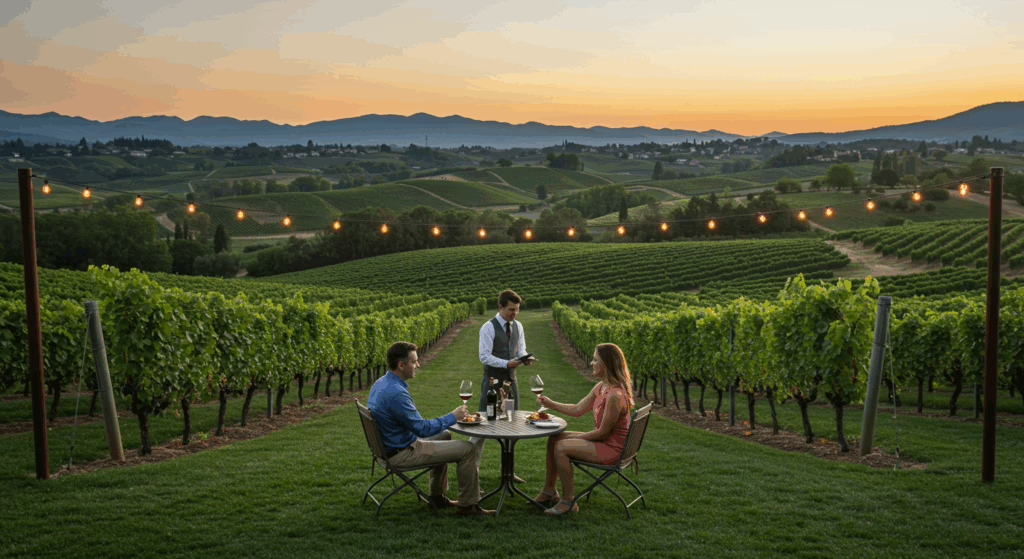
Summer (June to August) represents the high season for Sonoma wine tourism, bringing warm weather, extended daylight hours, and a vibrant atmosphere. The vineyards display full canopies of leaves and developing grape clusters, offering a dramatically different visual experience from other seasons.
During summer, Sonoma’s daytime temperatures typically range from 80-90°F (27-32°C), with cooling evening breezes providing relief and ideal conditions for al fresco dining and sunset tastings. Many wineries extend their hours during summer months, with some offering evening events that capitalize on the beautiful twilight conditions.
The summer season showcases vineyard management practices as workers diligently tend to the growing fruit. Visitors can observe canopy management, green harvesting (selective removal of grape clusters), and other viticultural techniques that ultimately influence wine quality. Several wineries offer educational tours explaining these crucial summer processes.
Summer attracts the largest crowds to Sonoma, particularly on weekends and holidays. Reservations become essential for popular wineries and restaurants during this peak period. Weekday visits offer a more relaxed experience, while weekend visitors should plan itineraries well in advance.
The summer calendar fills with wine-focused events and festivals:
- Sonoma County Wine Auction (July): A prestigious charity event featuring rare wine lots and exclusive experiences
- Sonoma County Fair (July-August): Combining agricultural heritage with wine competitions and tastings
- Taste of Sonoma (August): A grand tasting event showcasing hundreds of wines from across the region
For couples looking to experience Sonoma’s romantic summer ambiance, specialized itineraries similar to Napa Valley wine tours for couples can create unforgettable experiences in the sun-drenched vineyards.
Fall in Sonoma: Experience the Harvest Magic and Scenic Vistas
Fall (September to November) brings the most anticipated season in wine country: harvest time. This period, often called “crush,” transforms Sonoma into a hive of activity as wineries work around the clock to bring in perfectly ripened grapes and begin the winemaking process.
The landscape changes dramatically in autumn, with vineyard foliage transitioning to gold, amber, and crimson hues. This visual spectacle, combined with the intoxicating aromas of fermenting grapes wafting from winery doors, creates a sensory experience unique to harvest season.
September and October typically see daytime temperatures of 70-85°F (21-29°C), gradually cooling through November. These moderate conditions are ideal for outdoor activities and vineyard tours without summer’s intense heat.
Harvest season offers unparalleled behind-the-scenes experiences. Many wineries allow visitors to observe grape sorting, crushing, and early fermentation stages. Some even offer harvest participation experiences where guests can pick grapes or help with processing (typically requiring booking).
Fall draws significant crowds, particularly during weekend “crush” events, though visitation patterns differ from summer tourism. The demographic during this season shifts toward wine enthusiasts, specifically interested in the harvest process, creating a more focused and educational atmosphere.
Key fall events that showcase this magical season include:
- Sonoma County Wine Month (September): Special tastings and events throughout the region
- Sonoma Harvest Fair (October): Featuring award-winning wines and harvest celebrations
- Vineyard Hikes (September-November): Guided tours explaining harvest decisions and techniques
To maximize a fall visit, consider booking a weekday trip through Designated Drivers Napa Sonoma to avoid weekend crowds and secure reservations at smaller production facilities where the harvest experience feels most intimate.
Winter in Sonoma: Unwind with Intimate Tastings and Quiet Beauty
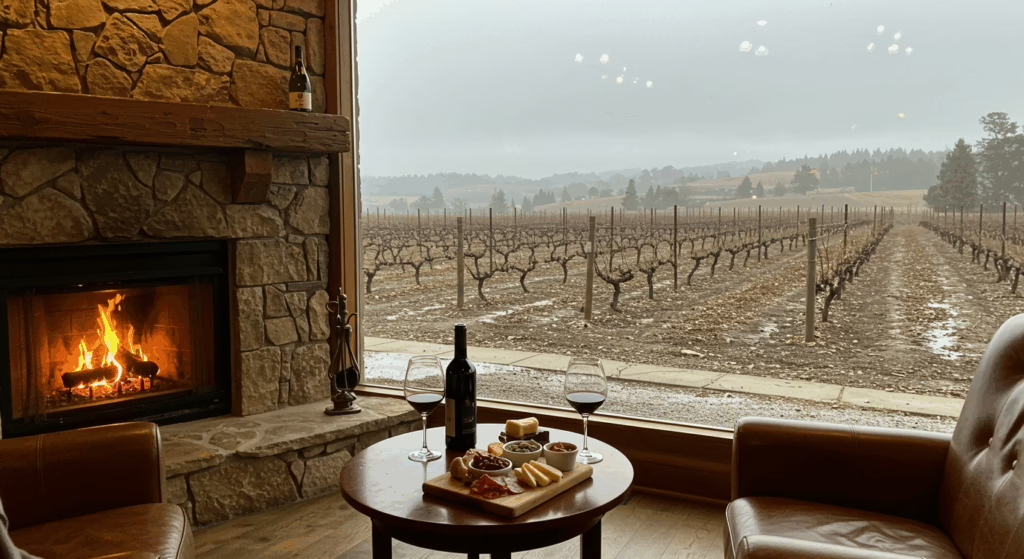
Winter (December to February) reveals a different side of Sonoma wine country: a peaceful, introspective period when the vines rest and winemakers focus on the previous harvest’s production. This underrated season offers unique advantages for visitors seeking a more intimate wine experience.
The dormant vines, with their twisted, bare branches, create a stark, artistic landscape against winter skies. Although less colorful than other seasons, winter’s minimalist beauty appeals to photographers and those appreciating the wine country’s structural elements.
Sonoma winters are generally mild, with daytime temperatures ranging from 55-65°F (13-18°C). Occasional rainfall turns the countryside lush green, while frost-kissed mornings create magical scenes across the vineyards. Tasting rooms become cozy retreats, often featuring fireplaces and heartier wine selections.
Winter presents rare opportunities to engage directly with winemakers and vineyard owners who have more time for in-depth conversations during this quieter period. Many wineries offer barrel tastings of developing wines from the recent harvest, providing insight into the evolution of wine before bottling.
The significantly reduced visitor numbers during winter translate to more personalized service, easier reservations, and often special winter pricing at tasting rooms and accommodations. For those seeking value and personal attention, winter delivers exceptional experiences.
Several notable winter activities make this season special:
- Winter Wineland (January): A weekend of limited production wines and winery tours
- Pruning demonstrations (January-February): Educational opportunities to understand this crucial vineyard management technique
- Mustard season (late winter): When cover crops between vineyard rows bloom into spectacular yellow fields
Frequently Asked Questions
What is the absolute best time to visit Sonoma for wine tasting?
While each season offers unique advantages, harvest season (September-October) generally provides the most comprehensive wine country experience. This period combines beautiful weather, stunning fall colors, and the excitement of crush activities.
You’ll witness the culmination of the growing season and often meet winemakers actively engaged in production. However, this timing comes with higher prices and larger crowds. Spring (April-May) offers an excellent alternative with flowering landscapes, moderate temperatures, and fewer tourists.
How far in advance should I book winery reservations in Sonoma?
Reservation requirements vary by season and winery popularity. During peak periods (summer weekends and harvest season), book premium and well-known wineries 2-4 weeks in advance. For highly sought-after experiences or large groups, extend this to 1-2 months.
In winter and on weekdays, many wineries accommodate same-day or next-day reservations, though calling ahead remains advisable. Always book further in advance for specialized experiences like winemaker lunches or vineyard tours.
What’s the difference between visiting Sonoma in winter versus summer?
Winter visits (December-February) offer peaceful, uncrowded tasting rooms, personalized attention, lower prices, and often the chance to meet winemakers. The dormant vineyards create stark, artistic landscapes, especially beautiful when morning frost or afternoon light highlights their structure.
Summer visits (June-August) feature full, leafy vineyards, extended tasting hours, outdoor events, warm temperatures ideal for picnics, and a vibrant atmosphere with many seasonal activities. However, summer brings larger crowds, higher prices, and the need for planning.
How should I plan transportation for Sonoma wine tasting?
Transportation planning is crucial for safe, enjoyable wine tasting. Options include designated drivers from your group (limiting their tasting experience), hired drivers who can drive your vehicle, private chauffeurs with luxury vehicles or group tour services.
For flexibility combined with safety, consider services that provide a professional driver for your vehicle, allowing customized itineraries while ensuring everyone can participate in tastings.
Are there significant differences between visiting northern versus southern Sonoma County?
Northern Sonoma (including Dry Creek Valley, Alexander Valley, and Russian River Valley) features more rural settings, winding roads through forested areas, and wineries specializing in Zinfandel, Cabernet Sauvignon, and Pinot Noir.
Southern Sonoma (including Sonoma Valley and Carneros) offers easier access from San Francisco, more structured wine routes, historical significance, and specialization in Chardonnay and Pinot Noir. Northern areas generally feel more rustic and spread out, while southern regions provide more concentrated wine routes with shorter drives between destinations.
Plan Your Sonoma Wine Tour with Trusted Local Drivers Today
Sonoma wine country offers distinctive experiences across all four seasons, each with its character and appeal. While harvest season captures the quintessential wine country experience, every time of year provides unique opportunities to connect with this world-class wine region. Your ideal timing depends on your preferences, whether you seek vibrant activity and perfect weather or value intimate experiences and fewer crowds.
By aligning your visit with seasonal highlights and planning practical elements like transportation and accommodations, you’ll create a memorable Sonoma experience regardless of when you visit. Consider your priorities, book accordingly, and prepare to discover why Sonoma’s seasonal beauty continues to captivate wine lovers year after year.
About Designated Drivers Napa Sonoma
Designated Drivers Napa Sonoma specializes in premium wine country transportation services with over 15 years of experience serving visitors to California’s renowned wine regions. We provide personalized, designated driver services that allow you to enjoy wine tasting without transportation concerns.
Our services include personalized wine tour planning, insider recommendations to hidden gem wineries, and transportation for special occasions like anniversary celebrations and intimate wine country getaways. Our team of professional drivers combines extensive wine country knowledge with safe driving practices to deliver exceptional experiences for wine enthusiasts.
We offer a unique service model where our professional drivers operate your personal vehicle or rental car, eliminating the need for traditional car services while providing the flexibility to create your custom itinerary.
Contact Designated Drivers Napa Sonoma today to discuss how our wine country transportation expertise can help you experience Sonoma’s seasonal beauty safely and comfortably. Schedule a consultation to learn more about our designated driver services and how we’ve helped countless clients create memorable wine country experiences throughout all four seasons.
